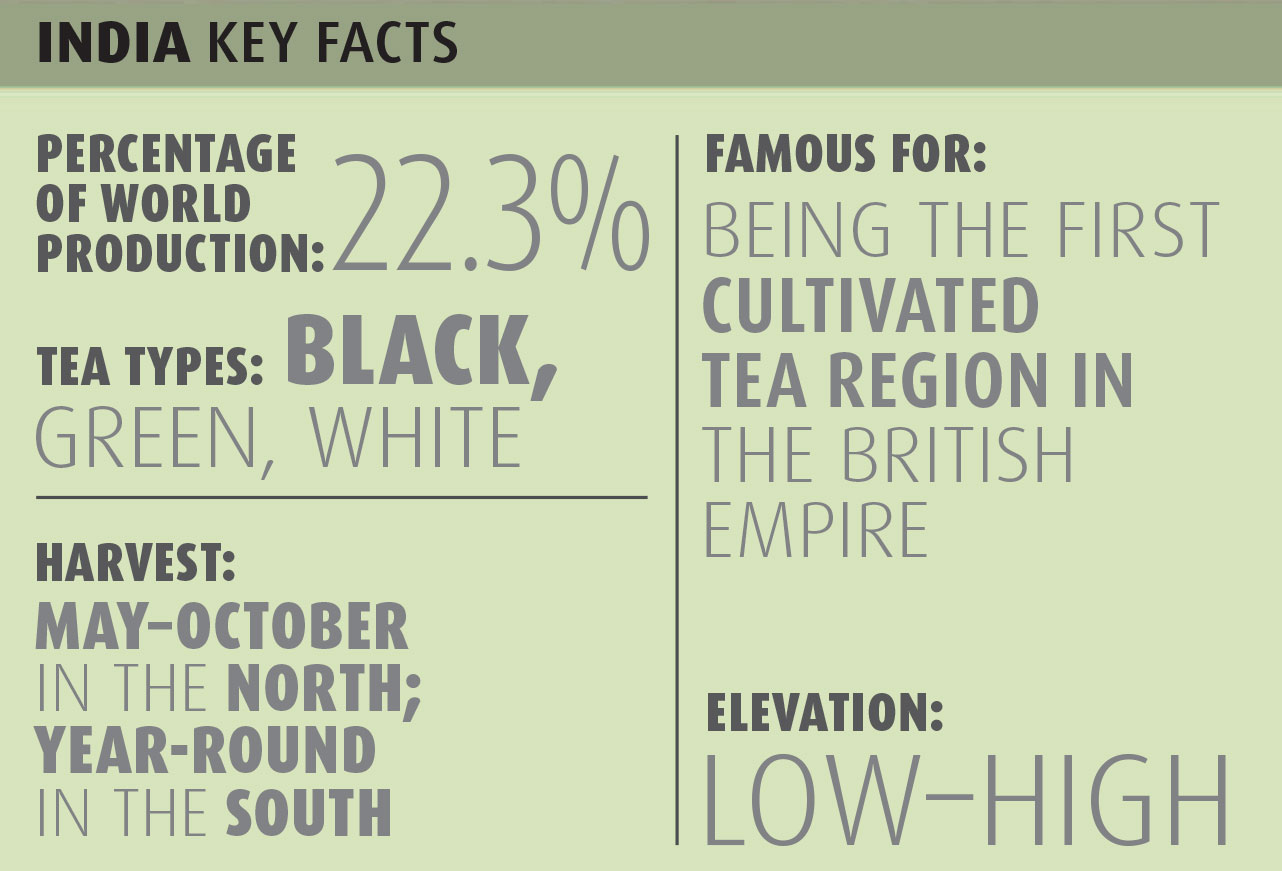Traditionally, India is known for its malty Assams and prized Darjeelings. Now the country is experimenting with growing different types of tea, such as Nilgiri Frost and Darjeeling Green.
Tea grown in India accounts for around 22 percent of the world’s tea production. Most of the tea grown in India is consumed within the country, with 20 percent being exported globally. In the early 1900s Indian tea was mostly consumed by upper- and middle-class Indians, with the vast majority of tea being exported to the West. It wasn’t until the advent of the CTC process in the 1950s that Indian tea became more affordable for the wider domestic market.
Tea cultivation began in earnest in India in the 19th century to supply the British with their own source of their favorite beverage.

The East India Company arranged to have seeds and plants smuggled from China, which were bred with local Assam plants. The cool climate in Darjeeling allowed the Chinese plants to flourish.
Although famed for its Darjeelings and Assams, today India is trying to promote its lesser-known teas, such as Nilgiri Frost, which is picked in late January or February, when the temperatures suddenly drop below freezing, producing very fragrant tea. Darjeeling tea
gardens are also growing and producing different varieties of white and green tea, which have fresh and sweet flavors.

 PLANTATIONS IN MUNNAR
PLANTATIONS IN MUNNAR
There are more than 50 tea plantations in and around the small hill station of Munnar in Kerala, covering an area of 7,413 acres (3,000 hectares).



